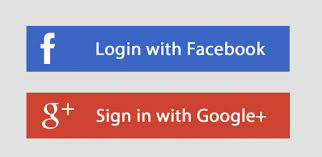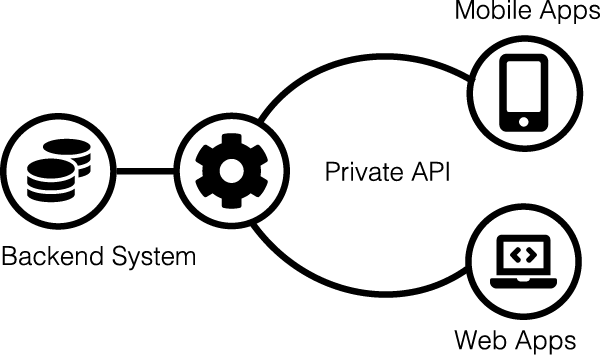Subscribe now and get the latest podcast releases delivered straight to your inbox.
An API is not to be confused with an IPA (which is delicious and worth writing about, but not here and now). While both can be sour and leave you feeling a little dizzy, when done right, they can truly enhance your experience.
API stands for Application Programming Interface. Now, I know that sounds very complex and technical, but it just means an interface, or method/way, for two pieces of software to communicate. In this article, we’ll keep our focus on online software -- websites.
There is a slew of APIs in use on just about every major website you can think of including Google, Facebook, and Amazon.
 These all use and provide ways for other websites and tools to consume each other’s data and extend their services.
These all use and provide ways for other websites and tools to consume each other’s data and extend their services.
If you’ve ever signed into an app or service using your Facebook or Google credentials, you’ve been in the presence of an API.
Here’s an Example to Illustrate...
An API can be compared to your bank’s ATM (Automated Teller Machine).
Just like an API, banks will make them accessible so you can grab your balance, withdraw cash and make payments at your convenience.
Before you can do anything, though, you’ll need to authenticate ( use your card and put in your PIN) so the bank knows you’re authorized to transact.
Similarly, with an API, you’ll send a request to the system along with your authentication and, if you’re authorized, you’ll receive the data you requested -- the cash money.
Just like it’s up to you what to do with the cash, in the case of data, you’re free to consume/display it as you see fit. This affords an opportunity to keep your website lean and helps drive focus on what is most important -- your customer’s experience.
Still, if your website makes use of a content management system like WordPress or HubSpot, there’ll be a database powering your site which holds all of your private data.
As a marketer, you’d be using APIs to extend the services available to your website visitors.
For example, an online mortgage calculator might be a costly thing to have developed on your own.
Well, there are APIs available that offer ways to send over a request with a few parameters you’d collect from your customer via a form. Then, the API will return a calculation which you can quickly display. In many cases, you wouldn’t even have to refresh the page.
Pretty cool, right?
Different Types of APIs
Not all APIs are the same, though. Below are the three ways you could classify them:
1. Open / Public
A public API is probably what first comes to mind when you think about APIs: the Twitter API, Facebook API, Google Maps API, and more.
These are available for use by anyone and are typically offered as a way to extend services (i.e. being able to add an interactive map to your website powered by the Google’s Map API.)
In some cases, use of Open/Public APIs is free, while others require membership or payment.
2. Partner ( Available to Only Select Individuals)
Forming partnerships is a powerful way to help entities grow.
As such, partnering to use data in a way that benefits multiple parties can also be very beneficial. Lots of companies partner to develop ways to share data via an API that can be re-worked to serve each other’s needs.
For example, an API that collects anonymous data from health monitoring tools (blood pressure, temperature, etc.) can be accessed and re-purposed to gauge trends serve advances in the medical field.
3. Internal / Private (Not for Public or External Use At All)
Like the name suggests, these are internal and meant only to suffice a very specific use-case.
Here at IMPACT, we use internal APIs to streamline our process for a number of facets in our web building endeavors.
Other organizations use private APIs to provide a singular interface that their consumer facing products can use as an information backbone. Check out the following illustration to see a very simple example.

What are APIs Meant to Do?
Reiterating the point made above, APIs are extremely useful to developers of all kinds of software (and marketers) because they provide a way to securely share abstracted data and display/use it in the way you need to.
This makes the communication much more efficient and should help keep your front-end software running lean and mean.
For marketers, the resulting ability to remain agile with your messaging and your design is extremely beneficial because it enables you to create the best possible experience for your customers.
Plus, you can extend your own services by leveraging the use of a much wider spectrum of available options on the market.
Do you want to pull your Twitter feed into your website? There’s an API for that.
Want to show your customers store locations based on their current location? There’s a GEOLocation API for that.
Want emails input into your web forms validated on the spot? You guessed it -- there’s an API for that, too.
At IMPACT, we do our very best to leverage these services depending on our customer’s goals, target persona, and needs. We’ve implemented hundreds of these integrations to maximize the value we can empower our customers to offer their customers and are always excited to find new, more advanced ones.
So Where Do I Sign Up?
That’s the thing -- an API is not the new thing that we can use for an uptick in sales or viewership; it’s not a hot trend or new feature.
APIs best serve your specific needs as they come up.
If you need to integrate two services you already use, then it’s a good idea to explore the use of an API to streamline the consumption of those two services. If they are working for you individually, there’s no reason to try and marry them for the input of information, but it might be good for the extraction of information.
Think about the tools you use and perhaps which would work better or create a better experience if they were able to communicate with each other. I’d put money on there being an API for that.


Order Your Copy of Marcus Sheridan's New Book — Endless Customers!

